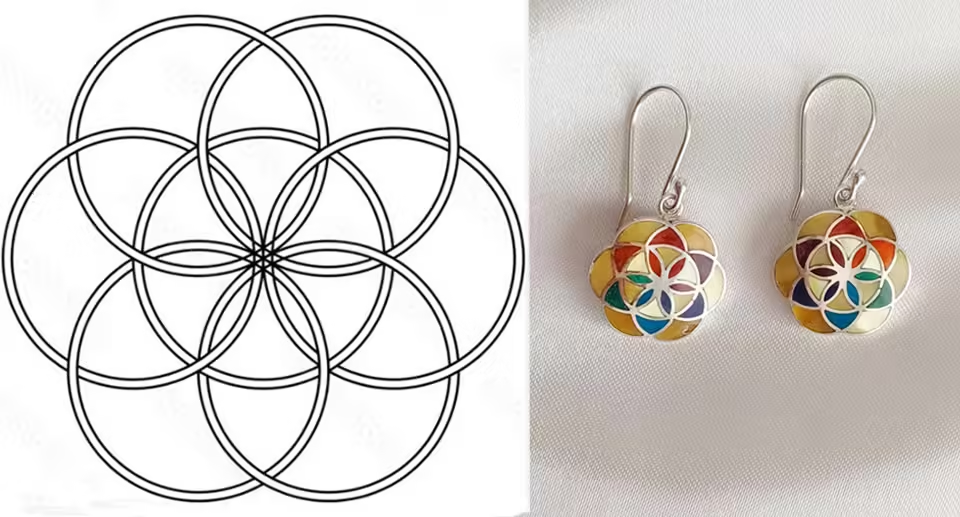The Seed of Life is a geometric figure that forms part of the Flower of Life, consisting of seven overlapping circles arranged in a hexagonal pattern. It holds deep spiritual, symbolic, and metaphysical meanings. Here are some key interpretations and aspects of the Seed of Life:
Symbolism and Meanings
Creation and Fertility: The Seed of Life represents the process of creation. It symbolizes the seven days of creation, with each circle representing a day. This makes it a powerful symbol of fertility, growth, and the generative forces of the universe.
Foundation of Existence: As the building block of the Flower of Life, the Seed of Life is seen as a fundamental structure underlying all existence. It represents the blueprint of the universe and the interconnectedness of all things.
Spiritual Awakening: In many spiritual traditions, the Seed of Life is used as a tool for meditation and contemplation. It helps individuals connect with the fundamental patterns of existence and achieve higher states of consciousness.
Sacred Geometry: The Seed of Life is a key figure in sacred geometry, a field that explores the geometric patterns that underlie the universe. It is believed to encode the secrets of the cosmos and reflect the harmony and order present in nature.
Symbol of Unity and Interconnectedness: The overlapping circles of the Seed of Life illustrate the interconnected nature of all life forms. It signifies unity, wholeness, and the interconnected web of life.
Transformation and Growth: The Seed of Life is often associated with personal growth and transformation. It represents the potential for development and the journey from the seed (potential) to the full bloom (actualization).
Visual and Structural Aspects
The Seed of Life consists of seven circles of the same diameter, each one centered on the circumference of one of the others. This creates a symmetrical pattern that looks like a series of petals radiating out from the center. The pattern can be extended to form the Flower of Life and other complex geometric shapes.
Cultural and Historical Significance
- Ancient Civilizations: The Seed of Life has been found in various ancient cultures and spiritual traditions, indicating its universal significance. It is often depicted in temples, manuscripts, and artifacts.
- Religious Contexts: In Christianity, the Seed of Life is sometimes associated with the seven days of creation described in the Book of Genesis. In other religious traditions, it may symbolize different aspects of creation and the divine order.
- Modern Spirituality: Today, the Seed of Life is embraced by many in the New Age and spiritual communities as a symbol of sacred geometry and the deeper truths of existence.
Practical Uses and Applications
- Meditation and Contemplation: Practitioners often use the Seed of Life as a focus for meditation, helping to center the mind and connect with the deeper patterns of the universe.
- Art and Design: The Seed of Life’s pleasing symmetry and aesthetic appeal make it a popular motif in art, jewelry, and architecture.
- Healing and Energy Work: Some believe that the Seed of Life has healing properties and can help to balance and harmonize energy within a person or space.
In summary, the Seed of Life is a profound symbol representing creation, unity, and the fundamental patterns of existence. Its deep spiritual and geometric significance makes it a powerful tool for meditation, personal growth, and the exploration of the interconnectedness of all life.




